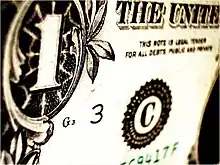 | |
| Currency | US dollar (USD) |
|---|---|
| 1 October – 30 September | |
Trade organizations | none |
| Statistics | |
| GDP | $636 million (2018) |
| GDP rank | 187th (nominal) / 190th (PPP) |
GDP growth | 2.2% (2018) |
GDP per capita | $11,467 (2018) |
GDP by sector | NA |
| NA | |
Population below poverty line | NA |
Labor force | 17,630 (2007) |
Labor force by occupation | agriculture 34%, industry 33%, services 33% (1990) |
| Unemployment | 8.36% (2020) |
Main industries | tuna canneries (largely dependent on foreign fishing vessels), handicrafts |
| External | |
| Exports | $69.9 million (2018) |
Export goods | canned tuna 93% (2004) |
Main export partners | Indonesia 70%, Australia 6.7%, Japan 6.7%, Samoa 6.7% (2002) |
| Imports | $147 million (2018) |
Import goods | materials for canneries 56%, food 8%, petroleum products 7%, machinery and parts 6% (2004) |
Main import partners | Australia 36.6%, New Zealand 20.3%, South Korea 16.3%, Mauritius 4.9% (2002) |
| Public finances | |
| 69.5 million (2015) | |
| Revenues | $121 million (37% in local revenue and 63% in US grants) (1997) |
| Expenses | $127 million (1997) |
| Economic aid | more than $40 million from US in financial support (1994) |
The economy of American Samoa is a traditional Polynesian economy in which more than 90% of the land is communally owned.[1] Economic activity is strongly linked to the United States, with which American Samoa conducts the great bulk of its foreign trade. Tuna fishing and processing plants are the backbone of the private sector, with canned tuna being the primary export. Transfers from the U.S. federal government add substantially to American Samoa's economic well-being. Attempts by the government to develop a larger and broader economy are restrained by Samoa's remote location, its limited transportation, and its devastating hurricanes.
_(cropped).jpg.webp)
Statistics
.jpg.webp)
GDP: purchasing power parity – $537 million (2007 est.)
country comparison to the world: 210
GDP (official exchange rate): $462.2 million (2005)
GDP – real growth rate: 3% (2003)
country comparison to the world: 139
GDP – per capita: purchasing power parity – $7,874 (2008)
country comparison to the world: 120
GDP – composition by sector:
agriculture:
NA%
industry:
NA%
services:
NA% (2002)
Labor Force: 17,630 (2005)
country comparison to the world: 203
Labor force – by occupation: government 33%, tuna canneries 34%, other 33% (1990)
Unemployment rate: 23.8% (2010)
country comparison to the world: 175
Population below poverty line: NA% (2002 est.)
Household income or consumption by percentage share:
lowest 10%:
NA%
highest 10%:
NA%
Inflation rate (consumer prices): NA% (2003 est.)
Budget:
revenues: $155.4 million (37% in local revenue and 63% in US grants)
expenditures: $183.6 million (FY07)
Agriculture – products: bananas, coconuts, vegetables, taro, breadfruit, yams, copra, pineapples, papayas; dairy products, livestock
Industries: tuna canneries (largely dependent on foreign fishing vessels), handicrafts
Industrial production growth rate: NA%
Electricity – production: 180 GWh (2006)
country comparison to the world: 179
Electricity – production by source:
fossil fuel:
100%
hydro:
0%
nuclear:
0%
other:
0% (2001)
Electricity – consumption: 167.4 GWh (2006)
country comparison to the world: 179
Electricity – exports: 0 kWh (2007)
Electricity – imports: 0 kWh (2007)
Oil – production: 0 barrels per day (0 m3/d) (2007 est.)
country comparison to the world: 209
Oil – consumption: 4,053 barrels per day (644.4 m3/d) (604 m³/d), 2006
country comparison to the world: 170
Oil – exports: 0 barrels per day (0 m3/d) (2005)
country comparison to the world: 142
Oil – imports: 4,066 barrels per day (646.4 m3/d) (2005)
country comparison to the world: 166
Natural gas – production: 0 cu m (2007)
country comparison to the world: 208
Natural gas – consumption: 0 cu m (2007)
country comparison to the world: 207
Natural gas – exports: 0 cu m (2007)
country comparison to the world: 202
Natural gas – imports: 0 cu m (2007)
country comparison to the world: 201
Natural gas – proved reserves: 0 cu m (2006)
country comparison to the world: 205
Exports: $445.6 million (2004)
country comparison to the world: 167
Exports – commodities: canned tuna 93% (2004)
Exports – partners: Indonesia 70%, Australia 6.7%, Japan 6.7%, Samoa 6.7% (2002)
Imports: $308.8 million (2004)
country comparison to the world: 195
Imports – commodities: materials for canneries 56%, food 8%, petroleum products 7%, machinery and parts 6% (2004)
Imports – partners: Australia 36.6%, New Zealand 20.3%, South Korea 16.3%, Mauritius 4.9% (2002)
Debt – external: $NA (2002 est.)
Economic aid – recipient: $NA; note – important financial support from the US, more than $40 million in 1994
Currency: US dollar (USD)
Currency code: USD
Exchange rates: US dollar is used
Fiscal year: 1 October – 30 September
References
- ↑ "Fact Sheet: Territory of American Samoa | FEMA.gov". FEMA (Press release). 30 September 2009. Retrieved 3 November 2019.